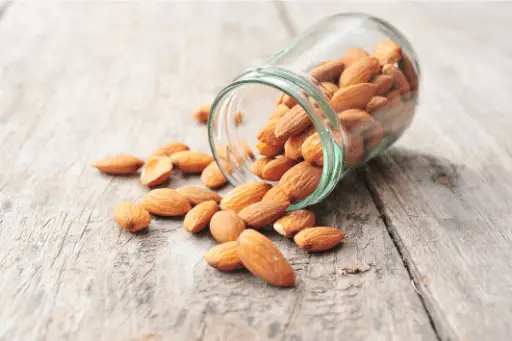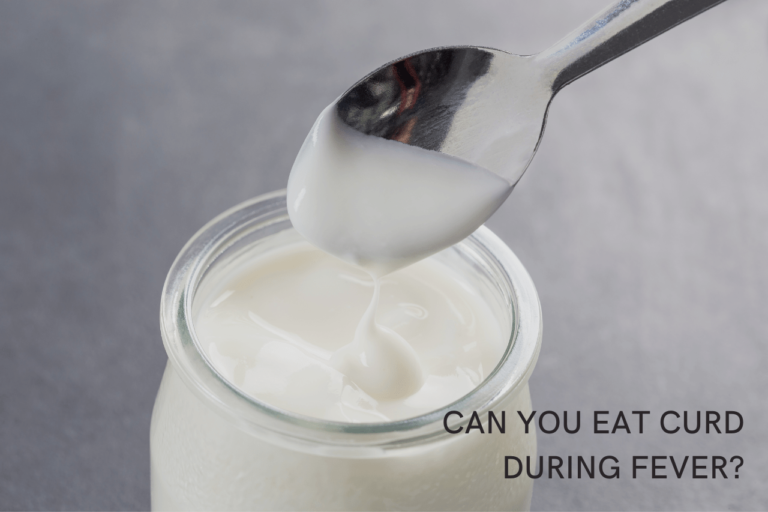Almonds are one of the most widely available nuts in the world. They are tasty and packed with essential nutrients for your body.
There are various type of almonds on the market. Unfortunately, not all of them have the same quality, and you may end up purchasing some low-quality almonds that will not only ruin your taste but also harm your health.
They are also quite expensive, which is why you want to make sure that you’re getting your money’s worth when buying almonds.
So, how do you identify if you’re getting good-quality almonds or not?
Choosing high-quality almonds isn’t tricky. I have listed some simple tips in this post that will help you identify good-quality almonds and avoid those that taste like cardboard or have a weird, bitter aftertaste.
Why choose good-quality almonds?

They taste delicious
Good quality almonds have a very distinctive taste and are usually a good choice for snacking. They taste delicious, and their flavor doesn’t degrade with time.
Almonds that are not good are usually dried out and taste bland, unlike the delicious taste of a good and fresh almond.
They have a long life
Good almonds are usually fresh ones, and they have a longer life than bad ones. Natural almonds, if stored properly, can last for two years or more than that.
Help in weight loss
It is indeed true that eating almonds can help you lose weight because they are so satisfying that people eat less at meals and snacks. However, if you choose low-quality almonds, your body may not receive the nutrients it requires to enhance metabolism and lose weight.
Also read: 9 Best Dry Fruits for Weight Loss that Actually Works
More nutritious than bad ones
There is no need to eat food if it’s not nutritious. It’s like feeding your body with junk that is of no use and will do more harm than good.
Good quality almonds are not just tasty but also much more nutritious than bad ones. Bad almonds are a waste of money because they don’t provide you with all the nutrients you need.
They are environmentally friendly
Good quality almonds are not only important to human health but also to nature health. It has been found that the nut trees that produce high-quality almonds have a lower carbon footprint and have better water use efficiency, which means that they take less water to produce the same amount of almonds and emit less greenhouse gas than the bad ones.
8 Tips to identify good-quality almonds

They must be stored appropriately
Almonds that are regularly exposed to oxygen lose their freshness, and the rancidity process speeds up. Unproperly stored almonds might also get caught by the mites, which hollow them from the inside.
When buying almonds, the packaging is the first and most important thing to consider. Always purchase almonds that are fully sealed packed or in an airtight container.
This ensures that they are fresh, haven’t been exposed to harmful pesticides, and haven’t been altered by pollutants’ particles.
Always check the expiry date
Almonds are often sold in bulk or large bags at many markets and grocery stores.
But what if you purchase more almonds than you can eat or if they are on the edge of expiry date? Usually, almonds stay fresh for about one year, but they can even last for more than two years if kept properly. But, once the almond bags are opened, the quality begins to deteriorate gradually.
While purchasing, you can identify good-quality almonds by looking at the expiry date.
Fresh almonds are sweet and delicious, whereas those close to or have passed their expiration date will taste bitter and will not be as fresh.
Go with unroasted almonds
For those of you who don’t know, roasted almonds are those that are cooked until they are brown and crunchy. This is done to increase the almonds’ aroma, texture, and crunchiness.
Roasting almonds changes their color and decreases their moisture content, creating a crunchy texture. In terms of nutrition, roasted and unroasted almonds are not equal, but they are very similar.
If the almonds are not roasted properly, the healthy fats in them may be damaged. It may also shorten the shelf life of almonds. This is because when almonds are roasted, their structure changes, making it easier for fat to come into contact with oxygen and thus become oxidized.
While purchasing, always go with unroasted almonds rather than roasted as they will have more healthy fats and long shelf life.
Check for size and shape
Before being packaged and sold in the market, almonds are sent to a grading facility where they are sorted by size and shape.
Take a close look at the almonds. If the size of the almonds varies, they’ve likely tampered.
Almonds are now sold in sealed packets in most grocery stores; however, the packet should be transparent. Avoid buying almonds with opaque packaging because it’s easy to mix low-quality almonds into these packets.
Go with loose almonds from a reputable supplier.
Check by smelling
Though it isn’t a perfect test, smelling almonds can help you determine their quality.
Almonds that have gone bad or rancid have an odor similar to paint or nail polish. Some of them also have an odor similar to old plastic containers.
If you recognize any of these smells in almonds, the chances are that they’ve probably gone bad and shouldn’t be eaten or purchased.
If you have almonds in the shell and want to check their rancidity, slice the almond in half, and if the texture is yellowish or has a honeycomb pattern, it is spoiled and should be discarded.
Although eating rancid almonds will not cause immediate harm but they will have an extremely bitter, unpleasant taste and may have harmful effects on your body in the long run.
Check for moisture
Moisture is one of the most critical factors in identifying good-quality almonds.
The almond, which contains more oil, is usually fresh.
To determine the moisture content of almonds, place 8-10 almonds in a steel vessel and shake vigorously. If the sound is similar to a stone crashing against a steel surface, the almonds are fine. But if a muffled sound occurs, it indicates that the almonds have been tainted.
Another way to identify moisture in almonds is to press almonds on the surface of the white paper. If almonds lose moisture on your paper, this indicates that almonds are of good quality.
Almonds can absorb and release moisture. This is why many shopkeepers keep almonds in a high-humidity environment to allow them to absorb water. When almonds absorb moisture (adsorption), some of their crunches are lost, mold can grow, and lipid oxidation increases.
This is why it’s crucial to examine where almonds have been placed. Choose almonds that have been placed in cool and dry conditions.
Check for polishing
Knowing how to identify good almonds by their color is essential for buying the highest-quality nuts.
It’s pretty hard to tell whether almonds are good or bad just by looking at their skin. Nowadays, many almonds are polished with red-ochre color. This is done to make the almonds look more appealing or hide the almonds’ broken end.
However, there are a few ways to tell if they are good quality.
Take a handful of almonds and rub them between your palms. If your palms turn the same color, the almonds have tampered.
Another way to see if your almonds have been chemically treated is to soak them in warm water for 5 minutes and then rub them; if they begin to lose color, they have tampered.
Also, avoid any nuts with dark or black spots, as well as any kernels that are shrivelled or appear “bloated.”
Always check the package label
While purchasing almonds, you must be aware of the added ingredients, as they may contain foods or additives that you are allergic to or that are harmful to your health.
Many almond or almonds products in the market contain other ingredients, such as peanuts, to which most people are allergic. There could also be a lot of additives that cause you to gain weight, such as sugar, salt, and preservatives.
If you’re concerned about this, you can contact the almonds’ manufacturer to inquire about the factory’s standards and the ingredients they are using.
How to store almonds to ensure the best quality?

Purchasing almonds is only the beginning, you also need to keep them fresh after purchase.
Almonds are undeniably a healthy snack that can be consumed at any time of day. However, if you want to reap the benefits of almonds for a long time, you should pay attention to how you store them.
Here are some tips for storing almonds to ensure the remain of the best quality for extended periods.
- Keep almonds in an airtight container in the refrigerator or freezer. The refrigerator is an excellent choice because it slows down the natural aging process and can help keep almonds fresh for about two years.
- Do not keep almonds at room temperature. Storing them in your pantry or kitchen cupboard is not a good idea.
- If you’re storing almonds in a high-humidity environment, make sure they’re completely packed in an airtight container. It is recommended that the moisture content of almonds be kept at 6% or less.
- Avoid prolonged exposure to strong odors because almonds can absorb odors from other materials, changing the flavor of the nuts.
- Keep insects and pests away from your almonds.
- Roasted almonds must be protected from oxygen using packaging with an oxygen barrier property.
Final words
Almonds are a high-quality product that people often overlook. Almonds can be a good investment in your overall health based on quality.
As consumer demand for almonds grows, so does the need for consumers to know how to identify good quality almonds.
In a nutshell, to identify the good quality almonds, check if the almonds have been properly stored, are not expired, are unroasted, are of similar sizes and shapes, smell good, have some moisture. Additionally, check to make sure it is not polished and doesn’t contain any of the ingredients to which you are allergic.
So the next time you go on hunting almonds and don’t want to get ripped off, follow these simple tips I’ve laid out here today!
If you think I missed something important in this article, please let me know in the comments section.
Eat Responsibly Until Then!




